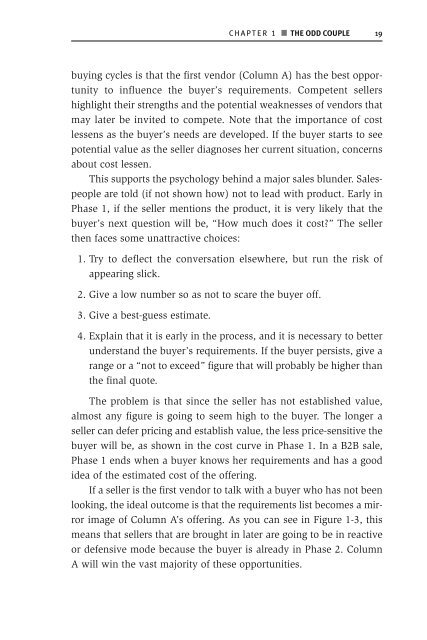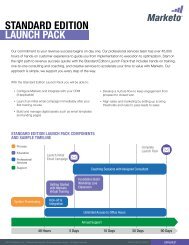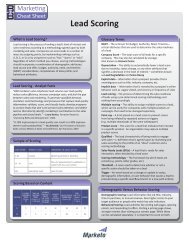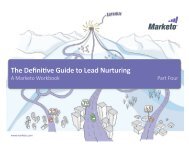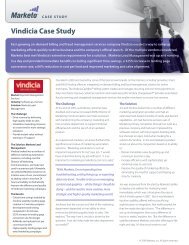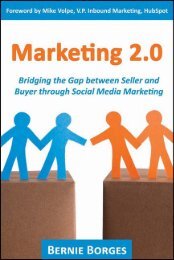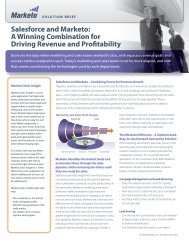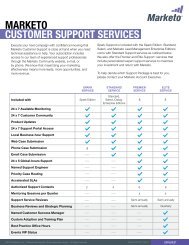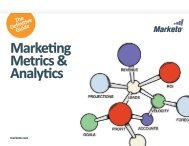RETHINKING RETHINKING - Marketo
RETHINKING RETHINKING - Marketo
RETHINKING RETHINKING - Marketo
You also want an ePaper? Increase the reach of your titles
YUMPU automatically turns print PDFs into web optimized ePapers that Google loves.
C H A P T E R 1 THE ODD COUPLE 19<br />
buying cycles is that the first vendor (Column A) has the best opportunity<br />
to influence the buyer’s requirements. Competent sellers<br />
highlight their strengths and the potential weaknesses of vendors that<br />
may later be invited to compete. Note that the importance of cost<br />
lessens as the buyer’s needs are developed. If the buyer starts to see<br />
potential value as the seller diagnoses her current situation, concerns<br />
about cost lessen.<br />
This supports the psychology behind a major sales blunder. Salespeople<br />
are told (if not shown how) not to lead with product. Early in<br />
Phase 1, if the seller mentions the product, it is very likely that the<br />
buyer’s next question will be, “How much does it cost?” The seller<br />
then faces some unattractive choices:<br />
1. Try to deflect the conversation elsewhere, but run the risk of<br />
appearing slick.<br />
2. Give a low number so as not to scare the buyer off.<br />
3. Give a best-guess estimate.<br />
4. Explain that it is early in the process, and it is necessary to better<br />
understand the buyer’s requirements. If the buyer persists, give a<br />
range or a “not to exceed” figure that will probably be higher than<br />
the final quote.<br />
The problem is that since the seller has not established value,<br />
almost any figure is going to seem high to the buyer. The longer a<br />
seller can defer pricing and establish value, the less price-sensitive the<br />
buyer will be, as shown in the cost curve in Phase 1. In a B2B sale,<br />
Phase 1 ends when a buyer knows her requirements and has a good<br />
idea of the estimated cost of the offering.<br />
If a seller is the first vendor to talk with a buyer who has not been<br />
looking, the ideal outcome is that the requirements list becomes a mirror<br />
image of Column A’s offering. As you can see in Figure 1-3, this<br />
means that sellers that are brought in later are going to be in reactive<br />
or defensive mode because the buyer is already in Phase 2. Column<br />
A will win the vast majority of these opportunities.


